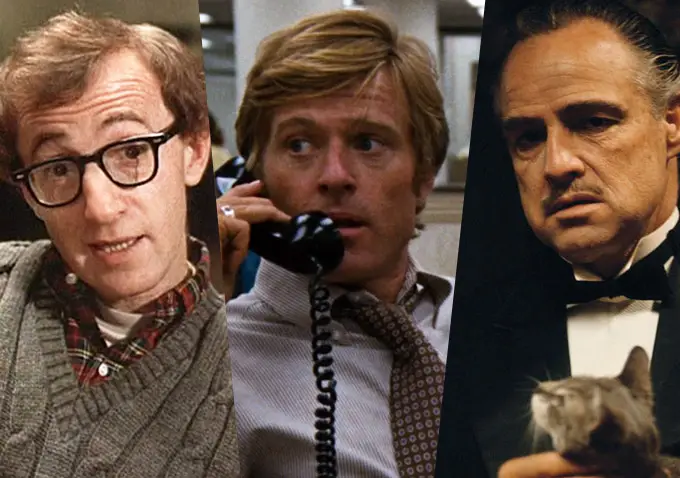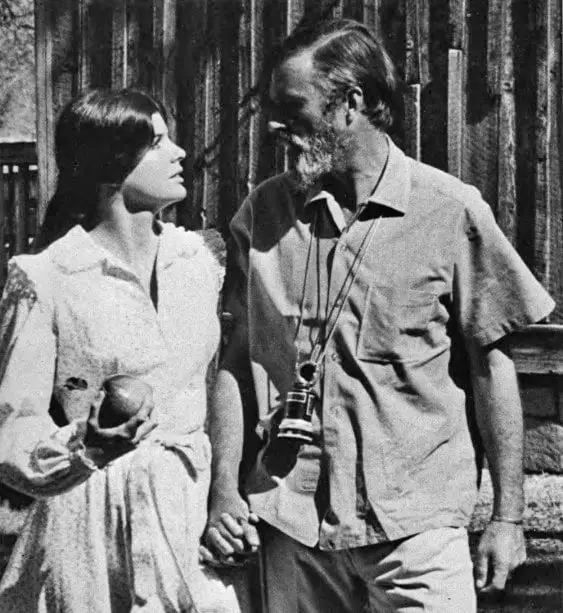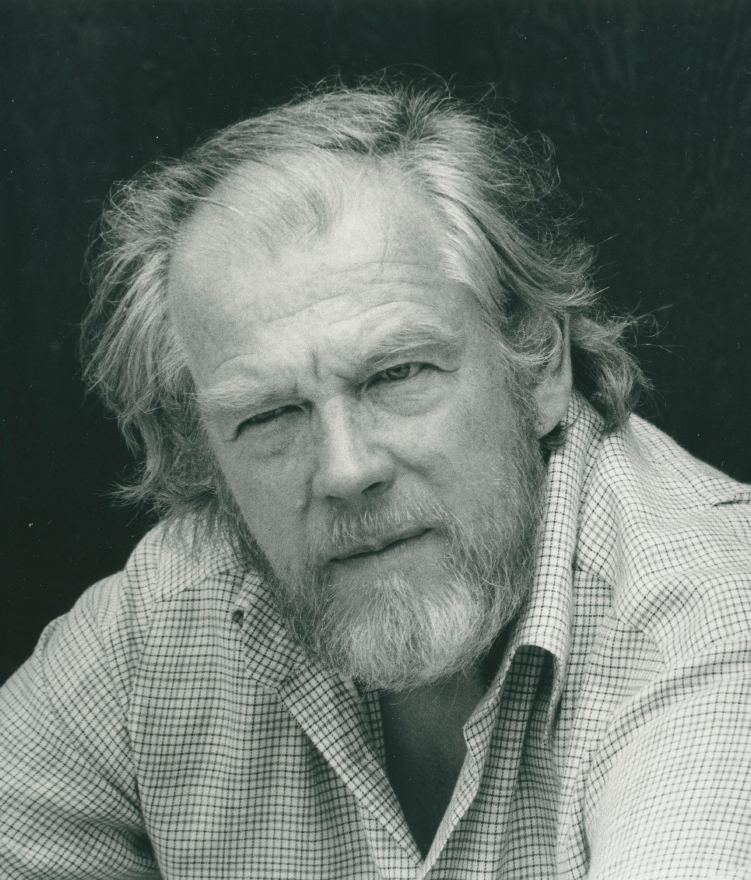Top 10 Best Cinematographers of All Time A Must-Read List

Cinematography is an essential aspect of filmmaking that often goes unnoticed by the general audience. It is the art of capturing moving images on film or digital media, and it plays a crucial role in bringing a director’s vision to life. The cinematographer is responsible for creating the visual language of a film, setting the tone, and enhancing the storytelling. Over the years, there have been many talented cinematographers who have made significant contributions to the world of cinema. In this blog post, we will take a look at the top 10 best cinematographers of all time, their iconic works, and their impact on the film industry.
1. Best Cinematographers of All Time – Gordon Willis
Known as “The Prince of Darkness,” Gordon Willis was a master of lighting and composition. He is best known for his work on Francis Ford Coppola’s “The Godfather” trilogy, where he used shadows and low-key lighting to create a sense of mystery and tension. His use of light and shadow in “The Godfather” has become iconic and has influenced many filmmakers. Willis also worked on other classics such as “Annie Hall,” “Manhattan,” and “All the President’s Men.” He was nominated for three Academy Awards and received an honorary Oscar in 2009 for his contributions to cinema.
Early Life and Career
Gordon Willis was born on May 28, 1931, in New York City. He started his career as a photographer and then transitioned into cinematography. He worked as a camera operator on various TV shows and films before getting his big break with “End of the Road” in 1970. His collaboration with Francis Ford Coppola on “The Godfather” trilogy brought him critical acclaim and established him as one of the greatest cinematographers of all time.
Iconic Works
Apart from “The Godfather” trilogy, Gordon Willis also worked on other iconic films such as “Klute,” “The Parallax View,” and “All the President’s Men.” He was known for his use of shadows and natural light, which added depth and atmosphere to his shots. His work on Woody Allen’s films, particularly “Annie Hall” and “Manhattan,” also received widespread praise.
Legacy
Gordon Willis passed away in 2014, but his legacy continues to live on through his groundbreaking work. He was a master of his craft and inspired many cinematographers with his unique style. His contribution to cinema is immeasurable, and he will always be remembered as one of the best cinematographers of all time.
2. Best Cinematographers of All Time – Roger Deakins
Roger Deakins is a British cinematographer who has worked on over 100 films, including some of the most critically acclaimed and commercially successful movies of all time. He is known for his versatility and ability to adapt to different genres, from dramas to sci-fi to war films. Deakins is a 15-time Academy Award nominee and has won two Oscars for his work on “Blade Runner 2049” and “1917.”
Early Life and Career
Roger Deakins was born on May 24, 1949, in Torquay, Devon, England. He started his career as a cameraman for the BBC and then moved on to shooting documentaries and short films. He got his big break in 1984 when he worked on the Coen brothers’ debut film, “Blood Simple.” Since then, he has collaborated with the Coen brothers on many of their films, including “Fargo,” “No Country for Old Men,” and “True Grit.”
Iconic Works
Roger Deakins’ body of work is vast and impressive. Some of his most iconic works include “The Shawshank Redemption,” “Skyfall,” “Sicario,” and “Blade Runner 2049.” He is known for his use of natural light and creating visually stunning landscapes. His work on “1917” was particularly noteworthy, as he used long takes to create an immersive and intense viewing experience.
Legacy
Roger Deakins continues to be one of the most sought-after cinematographers in Hollywood. He has influenced many filmmakers with his unique style and technical expertise. His ability to capture emotion and tell a story through visuals is what sets him apart from others. He is undoubtedly one of the best cinematographers of all time, and his legacy will continue to inspire future generations.
3. Best Cinematographers of All Time – Vittorio Storaro
Vittorio Storaro is an Italian cinematographer who is known for his collaborations with director Bernardo Bertolucci. He is a master of color and light and has created some of the most visually stunning films in cinema history. Storaro has won three Academy Awards for his work on “Apocalypse Now,” “Reds,” and “The Last Emperor.”
Early Life and Career
Vittorio Storaro was born on June 24, 1940, in Rome, Italy. He started his career as a camera operator and then moved on to become a cinematographer. He worked on various Italian films before getting his big break with Bernardo Bertolucci’s “The Conformist” in 1970. Since then, he has collaborated with Bertolucci on several films, including “Last Tango in Paris” and “The Last Emperor.”
Iconic Works
Vittorio Storaro’s use of color and light is what makes his work stand out. Some of his most iconic works include “Apocalypse Now,” “Reds,” and “The Last Emperor.” He is also known for his work on “Dick Tracy,” where he used bold and vibrant colors to create a comic book-like aesthetic. His collaboration with Bernardo Bertolucci has resulted in some of the most visually stunning films in cinema history.
Legacy
Vittorio Storaro’s contribution to the world of cinematography is immense. He has inspired many filmmakers with his use of color and light, and his work continues to be studied and admired by aspiring cinematographers. He is a true master of his craft and will always be remembered as one of the best cinematographers of all time.
4. Best Cinematographers of All Time – Emmanuel Lubezki
Emmanuel Lubezki, also known as “Chivo,” is a Mexican cinematographer who has worked on some of the most visually stunning films of the 21st century. He is known for his long takes and his ability to create immersive and breathtaking visuals. Lubezki has won three consecutive Academy Awards for his work on “Gravity,” “Birdman,” and “The Revenant.”
Early Life and Career
Emmanuel Lubezki was born on November 30, 1964, in Mexico City, Mexico. He started his career as a camera assistant and then moved on to become a cinematographer. He worked on various Mexican films before getting his big break with Alfonso Cuarón’s “A Little Princess” in 1995. Since then, he has collaborated with Cuarón on several films, including “Children of Men” and “Gravity.”
Iconic Works
Emmanuel Lubezki’s body of work is impressive, and it includes some of the most visually stunning films of the 21st century. Some of his most iconic works include “The Tree of Life,” “Birdman,” and “The Revenant.” He is known for his use of natural light and his ability to create long, uninterrupted shots that draw the audience into the story.
Legacy
Emmanuel Lubezki’s work has had a significant impact on the world of cinematography. He has pushed the boundaries of what is possible with camera and lighting techniques, and his work continues to inspire filmmakers around the world. He is undoubtedly one of the best cinematographers of all time, and his legacy will continue to live on through his groundbreaking work.
5. Best Cinematographers of All Time – Conrad L. Hall
Conrad L. Hall was an American cinematographer who is known for his collaborations with director Sam Mendes. He is a master of light and shadow and has created some of the most visually stunning films in cinema history. Hall won three Academy Awards for his work on “Butch Cassidy and the Sundance Kid,” “American Beauty,” and “Road to Perdition.”
Early Life and Career
Conrad L. Hall was born on June 21, 1926, in Papeete, Tahiti. He started his career as a camera operator and then moved on to become a cinematographer. He worked on various TV shows and films before getting his big break with “Cool Hand Luke” in 1967. His collaboration with Sam Mendes on “American Beauty” brought him critical acclaim and established him as one of the best cinematographers in Hollywood.
Iconic Works
Conrad L. Hall’s use of light and shadow is what makes his work stand out. Some of his most iconic works include “Butch Cassidy and the Sundance Kid,” “In Cold Blood,” and “Road to Perdition.” He also worked on “Searching for Bobby Fischer,” where he used different color palettes to represent the different chess players’ personalities.
Legacy
Conrad L. Hall passed away in 2003, but his legacy continues to live on through his groundbreaking work. He was a master of his craft and inspired many cinematographers with his unique style. His contribution to cinema is immeasurable, and he will always be remembered as one of the best cinematographers of all time.
6. Robert Richardson
Robert Richardson is an American cinematographer who has worked on over 70 films, including some of the most critically acclaimed and commercially successful movies of all time. He is known for his collaborations with director Oliver Stone and his use of natural light. Richardson has won three Academy Awards for his work on “JFK,” “The Aviator,” and “Hugo.”
Early Life and Career
Robert Richardson was born on August 27, 1955, in Hyannis, Massachusetts. He started his career as a camera operator and then moved on to become a cinematographer. He worked on various TV shows and films before getting his big break with “Platoon” in 1986. His collaboration with Oliver Stone on “JFK” brought him critical acclaim and established him as one of the best cinematographers in Hollywood.
Iconic Works
Robert Richardson’s body of work is vast and impressive. Some of his most iconic works include “Born on the Fourth of July,” “Natural Born Killers,” and “Kill Bill.” He is also known for his work on “Inglourious Basterds,” where he used different film stocks to create a sense of nostalgia and authenticity.
Legacy
Robert Richardson continues to be one of the most sought-after cinematographers in Hollywood. He has influenced many filmmakers with his unique style and technical expertise. His ability to capture emotion and tell a story through visuals is what sets him apart from others. He is undoubtedly one of the best cinematographers of all time, and his legacy will continue to inspire future generations.
7. Sven Nykvist
Sven Nykvist was a Swedish cinematographer who is best known for his collaborations with director Ingmar Bergman. He is a master of black and white photography and has created some of the most visually stunning films in cinema history. Nykvist won two Academy Awards for his work on “Cries and Whispers” and “Fanny and Alexander.”
Early Life and Career
Sven Nykvist was born on December 3, 1922, in Moheda, Sweden. He started his career as a camera assistant and then moved on to become a cinematographer. He worked on various Swedish films before getting his big break with Ingmar Bergman’s “The Seventh Seal” in 1957. His collaboration with Bergman on “Persona” brought him critical acclaim and established him as one of the best cinematographers in the world.
Iconic Works
Sven Nykvist’s use of black and white photography is what makes his work stand out. Some of his most iconic works include “Through a Glass Darkly,” “Winter Light,” and “Hour of the Wolf.” He also worked on “The Unbearable Lightness of Being,” where he used different color palettes to represent the different characters’ emotions.
Legacy
Sven Nykvist passed away in 2006, but his legacy continues to live on through his groundbreaking work. He was a master of his craft and inspired many cinematographers with his unique style. His contribution to cinema is immeasurable, and he will always be remembered as one of the best cinematographers of all time.
8. Christopher Doyle
Christopher Doyle, also known as Du Ke Feng, is an Australian-Hong Kong cinematographer who has worked on over 50 films. He is known for his collaborations with director Wong Kar-wai and his use of vibrant colors and handheld cameras. Doyle has won numerous awards for his work, including the Cannes Film Festival Award for Best Cinematography for “In the Mood for Love.”
Early Life and Career
Christopher Doyle was born on May 2, 1952, in Sydney, Australia. He started his career as a cameraman and then moved on to become a cinematographer. He worked on various Australian TV shows and films before moving to Hong Kong in the early 1980s. His collaboration with Wong Kar-wai on “Days of Being Wild” brought him critical acclaim and established him as one of the best cinematographers in Asia.
Iconic Works
Christopher Doyle’s body of work is vast and diverse. Some of his most iconic works include “Chungking Express,” “Fallen Angels,” and “In the Mood for Love.” He is known for his use of vibrant colors and handheld cameras, which add a sense of intimacy and rawness to his shots.
Legacy
Christopher Doyle continues to be one of the most influential cinematographers in Asia. He has inspired many filmmakers with his unique style and technical expertise. His ability to capture emotion and tell a story through visuals is what sets him apart from others. He is undoubtedly one of the best cinematographers of all time, and his legacy will continue to inspire future generations.
9. Janusz Kaminski
Janusz Kaminski is a Polish-American cinematographer who has worked on over 50 films, including some of the most commercially successful movies of all time. He is known for his collaborations with director Steven Spielberg and his use of light and shadow. Kaminski has won two Academy Awards for his work on “Schindler’s List” and “Saving Private Ryan.”
Early Life and Career
Janusz Kaminski was born on June 27, 1959, in Ziebice, Poland. He started his career as a camera operator and then moved on to become a cinematographer. He worked on various TV shows and films before getting his big break with “Schindler’s List” in 1993. His collaboration with Steven Spielberg brought him critical acclaim and established him as one of the best cinematographers in Hollywood.
Iconic Works
Janusz Kaminski’s body of work is vast and impressive. Some of his most iconic works include “Minority Report,” “Munich,” and “Lincoln.” He is known for his use of light and shadow to create a sense of tension and drama in his shots. His work on “Saving Private Ryan” was particularly noteworthy, as he used handheld cameras to create a sense of chaos and realism.
Legacy
Janusz Kaminski continues to be one of the most sought-after cinematographers in Hollywood. He has influenced many filmmakers with his unique style and technical expertise. His ability to capture emotion and tell a story through visuals is what sets him apart from others. He is undoubtedly one of the best cinematographers of all time, and his legacy will continue to inspire future generations.
10. Wally Pfister
Wally Pfister is an American cinematographer who is best known for his collaborations with director Christopher Nolan. He is a master of visual effects and has created some of the most visually stunning films in recent years. Pfister won an Academy Award for his work on “Inception.”
Early Life and Career
Wally Pfister was born on July 8, 1961, in Chicago, Illinois. He started his career as a camera operator and then moved on to become a cinematographer. He worked on various TV shows and films before getting his big break with “Memento” in 2000. His collaboration with Christopher Nolan on “The Dark Knight” trilogy brought him critical acclaim and established him as one of the best cinematographers in Hollywood.
Iconic Works
Wally Pfister’s use of visual effects is what makes his work stand out. Some of his most iconic works include “The Prestige,” “Inception,” and “Interstellar.” He is also known for his work on “Moneyball,” where he used different camera techniques to capture the intensity of baseball games.
Legacy
Wally Pfister has had a significant impact on the world of cinematography. He has pushed the boundaries of what is possible with visual effects, and his work continues to inspire filmmakers around the world. He is undoubtedly one of the best cinematographers of all time, and his legacy will continue to live on through his groundbreaking work.
Conclusion
Cinematography is an essential aspect of filmmaking, and these 10 cinematographers have made significant contributions to the world of cinema. Their unique styles and technical expertise have inspired many filmmakers and have left a lasting impact on the film industry. From Gordon Willis’ use of shadows in “The Godfather” to Wally Pfister’s groundbreaking visual effects in “Inception,” each of these cinematographers has created iconic works that will be remembered for generations to come. They are the masters of their craft, and their legacy will continue to live on through their groundbreaking work.





















